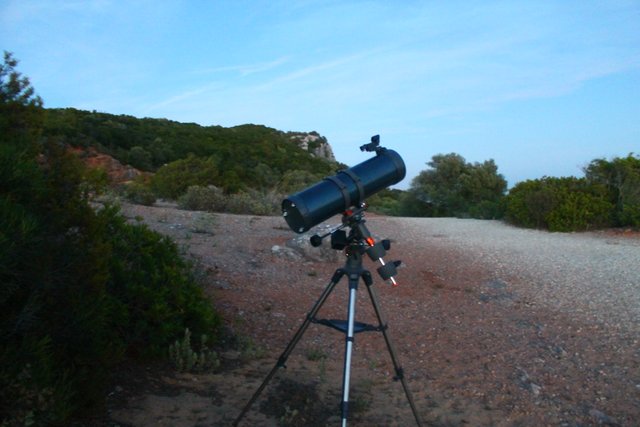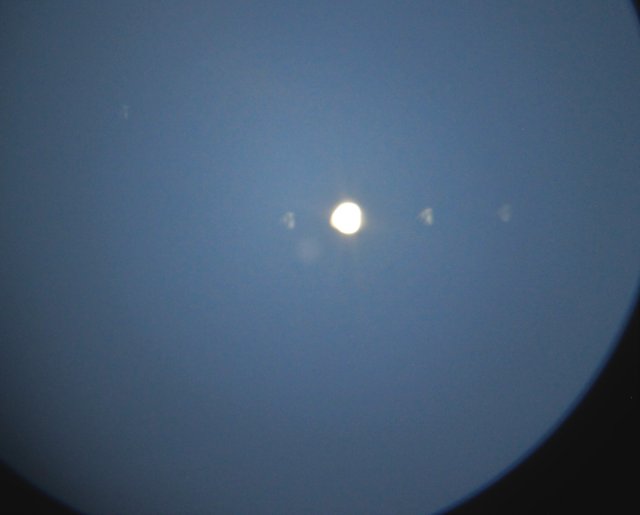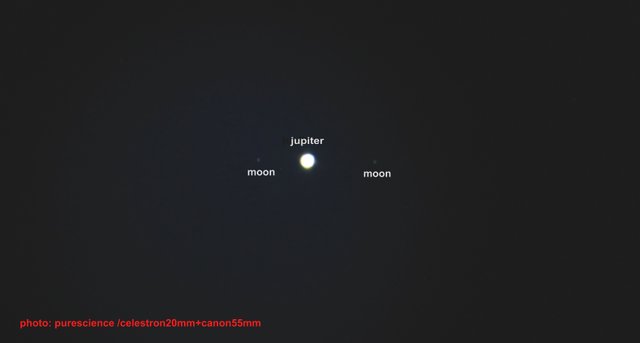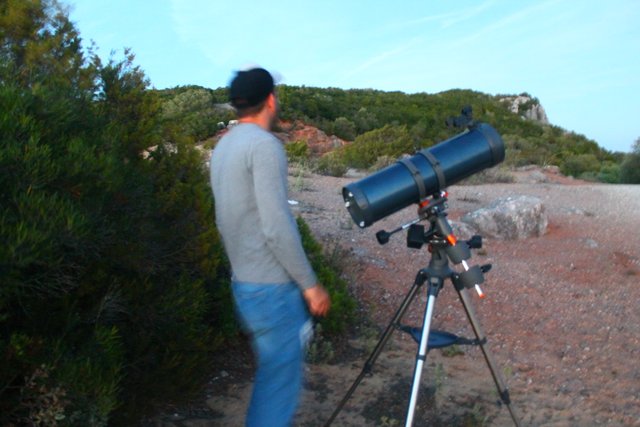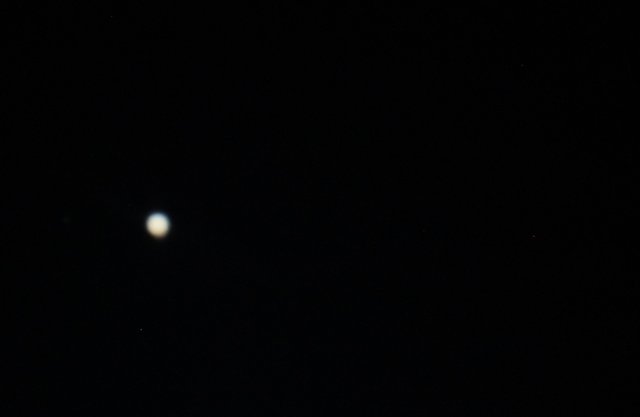Ever wonder what Jupiter looks like in a telescope? Actually Jupiter is one of the planets closest to our solar system, it is actually the fifth and due to its proximity and large size it is possible to see it even using a simple binocular, but when we go to the next level and use a telescope then we can see the moons of Jupiter this planet is gaseous, and due to this peculiarity it is a "gas giant"😍😍🌍🌌
Alguna vez te preguntastes como luce Jupiter en un telescopio? en realidad Jupiter es uno de los planetas mas proximos a nuestro sistema solar en realidad es el quinto y por su cercania y gran tamaño es posible verlo hasta usando un simple binocular, pero cuando pasamos de nivel y usamos un telescopio entonces podremos ver las lunas de Jupiter este planeta es gaseoso, y debido a esta particularidad es un "gigante gaseoso"🌌🪐
JUPITER FEATURES🌌🪐/CARACTERISTICAS DE JUPITER👨🏫👨🎓
Jupiter is at a distance of more than 600 million kilometers from the earth, it is characterized by being one of the objects that emits the brightest in the sky, and also one of the easiest to observe, when Venus disappears from the sky Jupiter becomes the brightest of the planets, being a giant planet it was easy to identify it by ancient civilizations therefore its discovery dates back to the time of the Romans when the name was given by one of their gods, Jupiter is the largest in the system solar and has an exact radius of 70000km, so that we have an idea of its size it occupies 1321 earths ... That is its volume when compared to our planet!👨🏫👨🎓
Jupiter esta a una distancia de mas de 600millones de kilometros de la tierra, se caracteriza por ser uno de los objetos que mas brillo emite en el cielo, y tambien uno de los mas faciles de observar, cuando Venus desaparece del cielo Jupiter pasa a ser el mas brillante de los planetas, por ser un planeta gigante fue facil de identificarlo por las antiguas civilizaciones por tanto su descubrimiento remonta desde la epoca de los Romanos cuando el nombre le fue dado por uno de sus dioses, Jupiter es el mas grande del sistema solar y tiene un radio exacto de 70000km, para que tengamos una idea de su tamaño ocupa 1321 tierras...Ese es su volumen si se compara con nuestro planeta!🌌🪐
I liked this photo because I was able to capture Jupiter and some of its moons, that's right! Not only does the earth have a natural satellite, Jupiter has some moons in total 79, but only some are seen in the telescope, Jupiter has a very powerful magnetic field in fact it is the strongest of all the planets in the solar system, and although not It is known as Saturn because it has visible rings. Jupiter has rings too, but they are too small to be seen. The main components of Jupiter are hydrogen, helium, water, ammonia and methane! Jupiter may surprise us since it does not have a surface like the earth in fact it is all gas.😮🤔
Me gusto esta foto porque pude captar jupiter y algunas de sus lunas, asi es! no solo la tierra tiene un satelite natural, jupiter tiene algunas lunas en total 79, pero solo algunas son vistas en el telescopio, Jupiter tiene un campo magnetico muy poderoso de echo es el mas fuerte de todos los planetas del sistema solar, y aunque no es conocido como saturno por presentar anillos visibles Jupiter tiene anillos tambien, pero son muy pequeños para ser vistos, los principales componentes de jupiter son el hidrogeno, helio, agua, amoniaco y metano! Jupiter puede sorprendernos ya que no tiene una superficie como la tierra de echo es todo gas. 💨💨💫
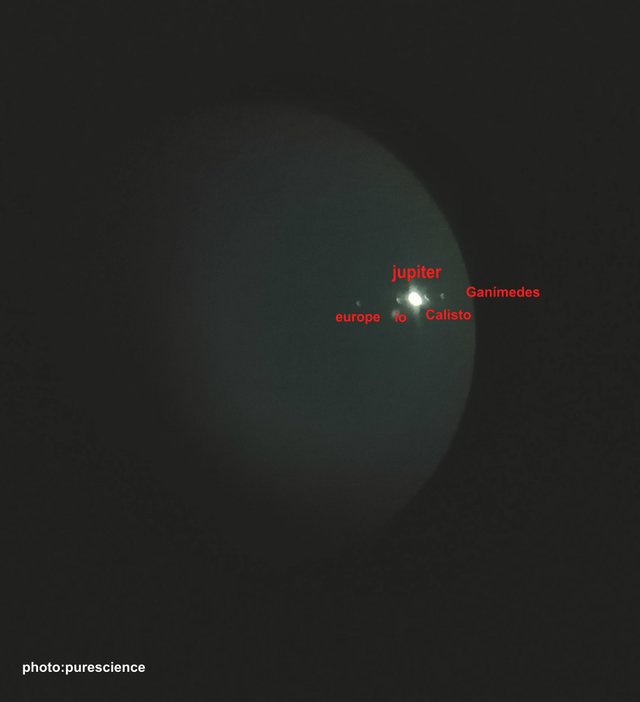
This photo is more surprising since we can see the 4 main moons of Jupiter: "Io, Europa, Ganymede, Callisto (wikipedia)" and the most surprising thing is that they all have different characteristics, for example Io is the closest to Jupiter and with a telescope like NASA's we could see it yellow, Ganymede is the largest of its natural satellites and under the powerful telescope we can see it with a dark gray color.👨🏫
Esta foto es mas soprendente ya que podemos ver las 4 principales lunas de Jupiter: "Ío, Europa, Ganímedes, Calisto (wikipedia)" y lo mas sorprendente es que todas tienen caracteristicas diferentes, por ejemplo Ío es el mas proximo a jupiter y con un telescopio como el de la NASA podriamos verlo amarillo, Ganímedes es el mas grande de sus satelites naturales y bajo el telescopio potente podemos verlo con un color gris oscuro. 👨⚖️👩⚖️🌌🪐
THANK YOU FOR YOUR VOTE AND YOUR VALUABLE OPINION (the photos is my property) 🙂🧠🦾👍
sources: https://es.wikipedia.org/wiki/Sat%C3%A9lites_de_J%C3%BApiter
https://www.planetario.net/jupiter/
